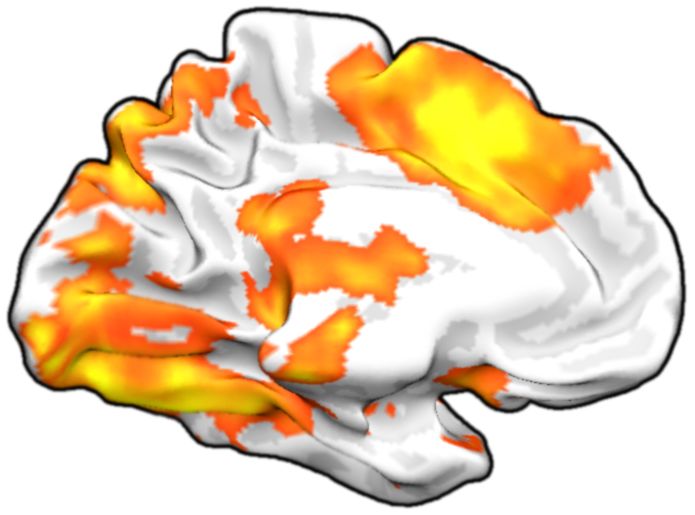Table of Contents
Surface projection
Motivation
While coordinate tables allow the comparison of results between studies (given they are derived from a suitably standardized space, such as SPM's MNI space or, with some caution, TAL coordinates in BrainVoyager), it is often much easier to grasp the spatial pattern of a distributed network of activation sites if it is displayed in a three-dimensional display.
Surface renderings are one way to accomplish this task. And this page describes the steps necessary to create renderings such as the following:
Requirements
To use the functions described here, you need
- a suitable surface (if your data is in sampled MNI space, you can use the
colin_LH_SPH.srfandcolin_RH_SPH.srffiles bundled with NeuroElf) - statistical data in VMP format (if the data is in a different format, such as SPM t-maps, the data must first be converted into BrainVoyager's VMP format)
Usage example
- create_surface_projection.m
% load SRF and VMP objects srf = xff('*.srf'); vmp = xff('*.vmp'); % create SMP (statistical maps sampled at vertex positions) smp = vmp.CreateSMP(srf); % display srf and smp in GUI neuroelf_gui; neuroelf_gui('openfile', srf);
The GUI then allows to interactively rotate and zoom the surface, select maps (if the VMP object contains several maps), change thresholds, etc.
The .CreateSMP call also allows to specify additional options, for more information please see the vmp.CreateSMP page.
For the above shown screenshot, the surface has additionally been smoothed:
srf.Smooth(100, 0.07);
GUI usage
- first, a VMP must be loaded (or created from a GLM using the contrast manager)
- next, the surface for which an SMP is to be created must be loaded and selected on the surface rendering page on the Main UI
- select the VMP → Create SMP… menu entry
- before displaying the SMP on the selected surface, you will be asked to give a filename to save this SMP (click Cancel if you do not wish to save at this time)
Or simply check out the video on the right hand side (also available in full size resolution ).

